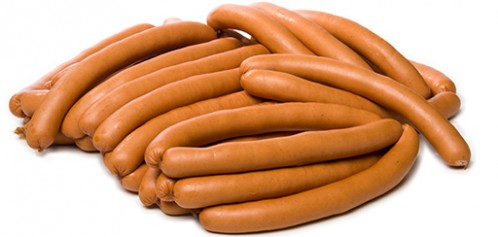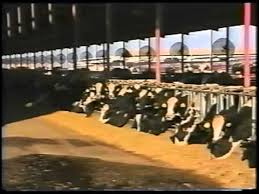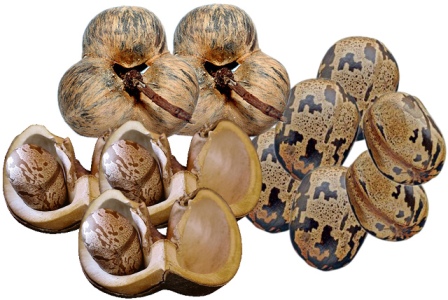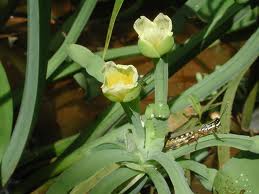Previous issue | Next issue | Archive
Volume 5 (1); January 25, 2015 [Booklet]
 Research Paper
Research Paper
Effect of nitrite and citric acid on the chemical composition and pH of the canned beef sausages.
Maha M.M.A, Abogroun H.A., Ibraheem M.T.
Online J. Anim. Feed Res., 5(1): 01-08, 2015; pii: S222877011500001-5
Abstract
The effects of nitrite and citric acid as preservatives on the chemical composition and pH of the canned beef sausage were investigated after three months storage at room temperature (35±5ºc). Two experiments were conducted in this study, the first, was undertaken to determine the effect of nitrite as a preservative on the chemical composition and pH of the canned beef sausages retorted at 107.2°C (225ºF) for 80 minutes, and at 115.5°C (240ºF) for 40 minutes. The second experiment, which was based on the results of the first one, was conducted to determine the effects of the absence of nitrite on the canned beef sausage processed with meat treated by immersion in 1% citric acid before processing at (80 and 30ºc) for one minute and drained, then the product retorted at 107.2°C for 80 minutes. The evaluation of percentages of the dry matter, ash, crude protein, fat and also pH were done monthly. The results in experiment 1 indicated that, percentages of the dry matter, ash and crude protein before and after canning of sausages were not significantly different (P>0.05). The fat (%) was significantly different among treatments (P<0.05) in the canned samples, and not in the raw samples. However, there was slight decrease in moisture content (increase in dry matter), ash, protein and fat percentages with increasing of storage period. The results in experiment 2 demonstrated that the dry matter, ash, crude protein and fat percentages were not significantly different (P>0.05) for the raw, cooked and canned sausages. Generally it was observed a decrease in moisture content (increases in dry matter content), ash%, crude protein fat (%) and pH value with increasing of storage period. Citric acid had no clear effect on chemical properties and pH value.
Keywords: Nitrite, Canned sausage, Citric acid.
[Full text-PDF] [XML] [DOAJ]
 Research Paper
Research Paper
Management practices of dairy farms; case study: Khartoum north and eastern Nile localities, Khartoum, Sudan.
Saeed S.Y and Fadel Elseed A.M.A.
Online J. Anim. Feed Res., 5(1): 09-17, 2015; pii: S222877011500002-5
Abstract
This case study was conducted to assess the management practices in the dairy farms of Eastern Nile and Khartoum North localities, Khartoum State, Sudan. A questionnaire targeting local dairy producers was used to cover 70 milk producers in the areas of Tibna, Silate, Eidbabiker and Elafoon. The single-visit, multiple-subject approach was used for data collection. The results showed that 53% of the farm owners adopted traditional type of animal keeping. The housing of calves was in groups. Calves, in general looked thin. The number of calves kept together was large and all calves, pre weaning, were kept in the same pen. Eighty-five percent of the farm's cows had high body condition score (BCS) than recommended (obese cows). Ninety-four percent of the owners were not interested in measuring the weight of their animals or calves at birth. The percentage of the infectious diseases such as Mastitis, Foot and Mouth disease, Contagious Bovine Box and Pleuro–phneumonia were found to be 99%, 51%, 13% and 11%, respectively. Diarrhea and Jaundice were the major causes of mortality in suckling calves in the study area. The respondents mentioned three major problems afflicting the dairy sector which were the high cost of nutrition, prices of drugs and lack of new technologies. Lack of extension services, poor veterinary services and scarcity of water comprised as major setbacks.
Keywords: Dairy Management, Housing, Calves Management, Body Condition Score, Infectious Diseases.
[Full text-PDF] [XML] [DOAJ]
 Research Paper
Research Paper
Nutritive value of rubber seed (Hevea Brasiliensis).
Hossain M.E., Karim M.H., Alam S. and Nath S.K.
Online J. Anim. Feed Res., 5(1): 18-21, 2015; pii: S222877011500003-5
Abstract
The study was undertaken to find out the chemical composition of rubber seeds (Hevea brasiliensis) available in Bangladesh. Hevea brasiliensis seeds were collected directly from 200 rubber trees of the rubber garden in the Bandarban area under standard random sampling technique. Seeds were decorticated, ground and dried in hot air oven. Chemical analyses of the samples were carried out in triplicate for moisture, dry matter (DM), crude protein (CP), crude fiber (CF), nitrogen free extract (NFE), ether extract (EE) and ash in the animal nutrition laboratory, Chittagong Veterinary and Animal Sciences University, Chittagong, Bangladesh. Metabolizable energy (ME) was calculated mathematically by using standard mathematical formula. Results indicated that, decorticated Hevea brasiliensis seeds contained 85.7% DM, 26.1% CP, 43.0% CF, 13.8% NFE, 11.0% EE and 1.8% ash. ME contents in in the seeds was 2101.1 kcal/kg DM. Since, decorticated rubber seeds contained substantial amount of metabolizable energy and proximate components, therefore it could be assumed that, like other unconventional feeds, it might be a promising feed resource for livestock.
Keywords: Chemical Composition, Hevea brasiliensis, Metabolizable Energy, Nutritive Value
[Full text-PDF] [XML] [DOAJ]
 Research Paper
Research Paper
Utilization of Limnocharis flava, an invasive aquatic weed from Kuttanad wetland ecosystem, Kerala, India as a potential feedstock for livestock.
Smitha Chandran S and Ramasamy EV.
Online J. Anim. Feed Res., 5(1): 22-27, 2015; pii: S222877011500004-5
Abstract
The chemical composition, nutritive value and trace element profiles of Limnocharis flava, an emergent aquatic weed during its different growth stages was determined to evaluate as possible cattle feed. Samples were analyzed at three progressive morphological stages of the plant, pre-flowering, flowering and post-flowering. The moisture content, dry matter (DM), ash content, crude protein (CP), ether extract (EE), crude fiber (CF), nitrogen free extract (NFE) and mineral constituents like sodium (Na+) potassium (K+), calcium (Ca2+), phosphorous (P) and trace elements like iron (Fe2+), copper (Cu2+), manganese (Mn2+), zinc (Zn2+), lead (Pb2+), chromium (Cr2+ ) nickel (Ni+) and cadmium (Cd+) contents were analyzed. The moisture content, organic matter (OM), acid detergent fiber content increased during maturation, while CP and EE were found decreased with increased growth stage. Only slight fluctuations occurred in Calcium, Potassium, Phosphorous and Sodium contents. The highest values for crude protein, fiber content, NFE and EE were observed at the flowering stage. These plant posses several characteristics which makes it a nutritious feed suitable for domestic livestock, and is recommended to use L.flava, particularly at the flowering stage of growth.
Keywords: Limnocharis flava, Aquatic Weed, Nutritive Value, Chemical Composition
[Full text-PDF] [XML] [DOAJ]

Research Paper
Nutritive value of Sal seed (Shorea Robusta).
Hossain M.E., Kabir M.H., Sarma S.M. and Sikder H.
Online J. Anim. Feed Res., 5(1): 28-32, 2015; pii: S222877011500005-5
Abstract
The study was undertaken to find out the chemical composition and nutritive value of Sal seed (Shorea robusta) available in Bangladesh. Shorea robusta seeds were collected from different remote places of study areas. Chemical analyses of the samples were carried out in triplicate for dry matter (DM), crude protein (CP), crude fiber (CF), nitrogen free extracts (NFE), ether extracts (EE) and total ash (TA) in the animal nutrition and poultry research and training centre (PRTC) laboratory, Chittagong Veterinary and Animal Sciences University, Chittagong, Bangladesh. Results indicated that, air dried corticated Shorea robusta seed contained 91.6% DM, 7.7% CP, 17.8% CF, 8.1% EE, 54.3% NFE and 3.7% TA. Similarly, air dried decorticated seed contained 88.7% DM, 8.8% CP, 7.3% CF, 10.0% EE, 58.6% NFE and 4.0% TA. Air dried seed shell contained 88.5% DM, 5.8% CP, 39.3% CF, 3.7% EE, 34.8% NFE and 4.9% TA. Metabolizable energy (ME) was 2614.2 Kcal/kg, 2933.0 Kcal/kg and 1582.9 Kcal/kg in corticated seed, decorticated seed and seed shell respectively. It could therefore be inferred that, the Shorea robusta seed seems nutritionally sound enough to be utilized as unconventional feed for ruminant especially during scarcity period.
Keywords: Chemical Composition, Nutritive Value, Metabolizable Energy, Shorea robusta.
[Full text-PDF] [XML] [DOAJ]
Previous issue | Next issue | Archive

This work is licensed under a Creative Commons Attribution-NonCommercial 4.0 International License.
| < Prev | Next > |
|---|


